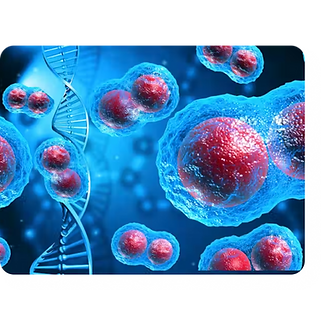
Exosomes
What Exactly are Mesenchymal Exosomes?
MSC exosomes are nano-sized particles naturally secreted by mesenchymal stem cells (MSCs), which are known for their regenerative properties. While scientists originally believed that stem cells performed healing by transforming into new tissue, current research shows that it is actually the exosomes they release that drive most of the repair process. These exosomes act as communication vehicles, carrying critical biological signals between cells.
MSC exosomes are loaded with a powerful cargo of proteins, growth factors, RNA, and signaling molecules that influence cellular behavior. Their primary role is to deliver these products to damaged cells, helping to coordinate the body’s natural repair and recovery processes.
.png)

How Do Exosomes Work?
Exosomes act as your body’s natural delivery system for repair signals.
Here's how the process works:
1
Cellular Stress
Signals
When your cells are damaged or inflamed, they send out
distress signals.
2
Exosome
Release
MSCs respond by releasing exosomes loaded with healing instructions.
3
Delivery
Exosomes merge with damaged cells and release their cargo of proteins, RNA, and growth factors.
4
Response
The receiving cells are reprogrammed to repair, reduce inflammation, and restore balance.
5
Targeting
These exosomes travel through the body to reach the areas that need help.
Potential Benefits Undergoing Research
Promote neuroprotection and nerve cell signaling
Stimulate tissue repair by enhancing cellular
communication
Support wound healing and skin regeneration
Help regulate immune responses and reduce
inflammation
Assist in maintaining cellular health and addressing
age-related decline

Why We Might Need Exosomes
When we’re young, our bodies heal quickly because our stem cells and exosomes are working at full strength. They repair damaged cells, keep our skin smooth, and help us stay active and healthy.
As we age into our 40s, 50s, and 60s, those stem cells and exosomes start to wear out. They’ve made so many copies of themselves over the years that they become less effective. This is why we start seeing signs of aging like wrinkles, joint stiffness, and slower recovery from injuries.
Here’s where regenerative medicine and exosome therapy come in. By supplementing what the body is no longer producing at high levels, we can support natural repair processes, boost resilience, and help the body function more like it did in youth.
Advantages of Exosomes Over Stem Cells

Cell-Free and Non-Immunogenic
Unlike MSCs, which may face immune rejection in allogeneic (donor-derived) applications, exosomes do not contain live cells and pose minimal risk of immune response. This makes exosome therapy safer and more universally applicable.
.png)
.png)
.png)